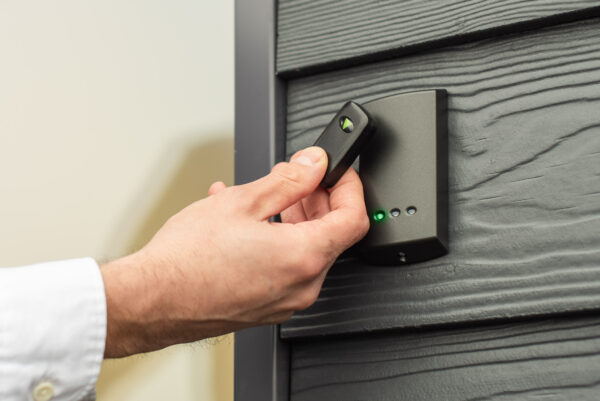
What Does CCTV Stand For? Unravelling Closed-Circuit Television for Modern Security
For decades, CCTV has stood for Closed-Circuit Television, a cornerstone of modern security and surveillance. But what exactly does CCTV stand for? And why has this technology become so vital for homes and businesses across the UK? As specialists in fire and security, we’ve seen first-hand the transformative impact of these systems. Let’s delve into the acronym and the powerful technology it represents.
Understanding the “Closed-Circuit” in CCTV
At its core, CCTV stands for Closed-Circuit Television because, unlike broadcast television that sends signals widely to many receivers, a CCTV system transmits video signals to a limited number of monitors or recording devices. This creates a “closed” loop, specifically designed for surveillance within a defined area. This closed nature ensures privacy, security, and dedicated monitoring, rather than public broadcasting.
Why Do You Need CCTV? More Than Just Surveillance
Beyond simply monitoring, CCTV systems offer a multitude of benefits that address key security and operational needs. When considering what CCTV stands for in terms of real-world value, it means:
- Deterrence: Visible cameras are a powerful deterrent against theft, vandalism, and other criminal activities. Criminals often opt for easier targets.
- Evidence Collection: High-quality footage provides crucial evidence for law enforcement, aiding in investigations and prosecutions. This can be invaluable in identifying culprits.
- Enhanced Safety: Monitoring allows for quick response to incidents, from suspicious activity to health and safety breaches, protecting both people and property.
- Operational Oversight: For businesses, CCTV can help monitor operations, improve productivity, and resolve disputes.
- Peace of Mind: Knowing your property is under vigilant watch offers significant reassurance for homeowners and business owners alike.
The Evolution of CCTV: From Analog to Smart Systems
The history of CCTV (Closed-Circuit Television) is one of continuous innovation, moving far beyond grainy black-and-white images.
- Early Days (The Foundation): The first commercial CCTV system was reportedly used in Germany in 1942 to monitor V2 rocket launches. In the UK, early adoption was primarily for high-security areas.
- Analog Era: Traditional systems relied on coaxial cables to transmit signals to Digital Video Recorders (DVRs). These were robust but often limited in resolution and scalability.
- Digital Revolution (IP CCTV): The advent of Internet Protocol (IP) cameras brought about a seismic shift. IP CCTV transmits video over networks, offering significantly higher resolutions (HD, 4K), smart analytics, and greater flexibility. Network Video Recorders (NVRs) became the standard for recording.
- Modern Advancements: Today’s CCTV systems incorporate:
- AI-powered Analytics: Facial recognition, ANPR (Automatic Number Plate Recognition), object detection, and behaviour analysis.
- Cloud Storage: Secure off-site storage for footage.
- Remote Access: View live or recorded footage from anywhere via smartphones or computers.
- Thermal Imaging: Detection in complete darkness or through smoke.
- Wireless Connectivity: Easier installation and greater flexibility.
Key Components of a Modern CCTV System
Regardless of the specific CCTV category or complexity, most CCTV systems comprise core elements:
- Cameras: The “eyes” of the system, varying in type (dome, bullet, PTZ – Pan Tilt Zoom), resolution, and features.
- Recording Device: DVR (for analog) or NVR (for IP) to store footage.
- Storage: Hard drives, SSDs, or cloud-based solutions for recorded data.
- Monitors: For viewing live or recorded footage.
- Cabling/Network: Coaxial for analog, Ethernet or Wi-Fi for IP systems.
- Software/Apps: For managing, viewing, and analysing footage remotely.
Integrating CCTV with Other Security Systems
A truly robust security posture often involves integrating your CCTV system with other crucial components:
- Access Control Systems: Link CCTV to doors and gates to visually verify individuals gaining entry. Learn more about our access control systems for seamless security integration.
- Intruder Alarms: When an intruder alarm is triggered, CCTV can automatically focus on the activated zone, providing visual verification of the cause.
- Fire Alarm Systems: In a fire event, CCTV can help monitor evacuation routes and provide situational awareness for emergency services. (Though less direct, if you have a blog post on fire safety and monitoring, you could link here).
- Perimeter Security: Integrate with external sensors (e.g., motion detectors, beam barriers) for comprehensive site protection.
Essential CCTV Acronyms & Terminology: Your Quick Reference Guide
Navigating the world of CCTV involves a few key terms. Here’s a quick guide to what some common CCTV acronyms stand for:
- CCTV: Closed-Circuit Television
- DVR: Digital Video Recorder (for analog cameras)
- NVR: Network Video Recorder (for IP cameras)
- IP Camera: Internet Protocol Camera
- PTZ: Pan, Tilt, Zoom (a type of controllable camera)
- ANPR: Automatic Number Plate Recognition
- VCA: Video Content Analytics
- POE: Power over Ethernet (powers IP cameras via the network cable)
- HD: High Definition
- 4K: Ultra High Definition (approximately 4000 pixels horizontal resolution)
Frequently Asked Questions about CCTV Systems
For businesses, data retention policies vary, but commonly range from 7 to 31 days, depending on the risk assessment and specific requirements. For home users, it’s often limited by storage capacity.
Costs vary widely depending on the number and type of cameras, recording capabilities, installation complexity, and any advanced features like analytics. It’s always best to get a tailored quote from a reputable installer. You can also have a read of our other blog post on the cost of CCTV.
Broadly, they are Analog CCTV (or HD-TVI/CVI) which uses coaxial cables and DVRs, and IP CCTV which uses network cables and NVRs. IP systems offer higher resolution and more advanced features.
Yes, CCTV is legal, but its use is governed by various laws, including the Data Protection Act 2018 (which incorporates GDPR) and the Human Rights Act. For domestic use, it’s generally less regulated, but you must respect neighbours’ privacy. For businesses, strict rules apply regarding signage, data retention, and how footage is used and stored. It’s crucial to understand your obligations. For detailed guidance, please refer to the Information Commissioner’s Office (ICO) guidance on CCTV.
CCTV stands for Closed-Circuit Television. It’s called “closed-circuit” because the video signals are transmitted directly to a limited set of monitors or recording devices, unlike public broadcasts. This dedicated connection makes it ideal for private surveillance.
Secure Your Property: Expert CCTV Solutions from Cobra Fire and Security
Understanding what does CCTV stand for is just the first step. Implementing a robust, effective CCTV system requires expertise in design, installation, and maintenance. At Cobra Fire and Security, we specialise in providing bespoke CCTV system categories and solutions tailored to your specific needs, ensuring optimal security and peace of mind. Our professional CCTV installation and ongoing system support and maintenance services ensure your peace of mind. We also offer 24/7 CCTV monitoring for continuous vigilance.
Ready to enhance your security? Contact us today for a free consultation and see how a professionally installed CCTV system can protect what matters most to you.
Share this article
Written by : Michael Winter
Follow us
A quick overview of the topics covered in this article.
- What Does CCTV Stand For? Unravelling Closed-Circuit Television for Modern Security
- Understanding the “Closed-Circuit” in CCTV
- Why Do You Need CCTV? More Than Just Surveillance
- The Evolution of CCTV: From Analog to Smart Systems
- Key Components of a Modern CCTV System
- Integrating CCTV with Other Security Systems
- Essential CCTV Acronyms & Terminology: Your Quick Reference Guide
- Frequently Asked Questions about CCTV Systems
- Secure Your Property: Expert CCTV Solutions from Cobra Fire and Security
Latest articles
December 28, 2025
December 28, 2025
December 28, 2025









